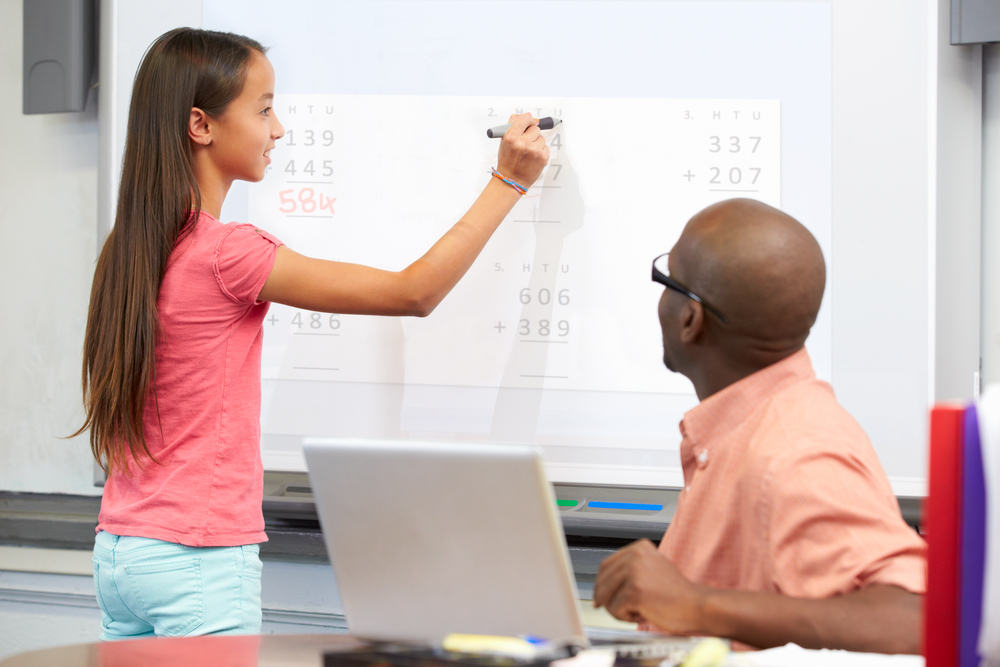4 things to try on your classroom’s interactive screen
Most classrooms now have interactive screens, but are you making the most out of yours? Try these new methods and engage with your class on a whole new level.

Using an interactive screen or electronic whiteboard as a central hub for lessons is now commonplace in schools across the country.
But, are you using your interactive screen to its full potential? Here are four tried and tested techniques for getting the most out of this handy piece of classroom technology:
1. Interactive lessons
Pupil involvement is at the heart of interactive screen and electronic whiteboard methodology. Using this technology, you can:
- Test pupils’ knowledge by asking them to fill in pop quizzes, times tables charts and crosswords
- Task the class with discussing and collaborating on art and design-related projects
- Play educational games with whole-class participation, using online games and games consoles
- Explore topics in detail together by turning it into a microscope or overhead projector
In essence, replacing a traditional whiteboard with an interactive screen turns it from a teacher-controlled to a class-centric resource.
2. Concept visualisation
Interactive screens are a great option for lifting exciting concepts off dusty textbook pages and exploring them in unrivalled colour and detail using educational videos and detailed diagrams.
These are just some of the ways you can use an interactive screen to visualise places, people and objects:
- History: Visit the pyramids of Egypt or explore a mediaeval king’s court.
- Science: Unravel DNA or show your pupils how neurons fire around the brain.
- Art: Highlight artistic techniques and view sculptures from a 360° perspective.
- Geography: Zoom in on interactive maps and visualise complex processes, like erosion.
This same model can be applied to any subject – just use a little imagination.
3. Social teaching
Use your interactive screen to integrate a social aspect into your teaching practices.
Team up with another school overseas and set up a free Skype call. Introduce pupils to a new culture by encouraging them to ask questions about their language and lifestyle.
Try collaborating on a project together, playing games or introducing an international aspect to ‘show and tell’.
This method is also a convenient way of speaking with specialists in specific fields. Without having to organise a school trip, you could open up a dialogue with an academic, member of museum staff or someone with a unique and interesting profession.
4. VLE integration
Many schools are now waking up to the potential of virtual learning environment (VLE) software – an interactive screen can help you optimise its potential.
Here’s how an interactive screen can work in tandem with a VLE:
- Create a lesson plan beforehand by dragging and dropping multimedia resources into an intuitive interface on a mobile or desktop device.
- Synchronise these resources with the interactive screen, conduct the lesson with an interactive element, then log pupil comments for later.
- Share the multimedia resources and pupil feedback as a presentation with the whole class digitally to assist with homework and store as a reference resource.
Install an interactive screen to bring colour and life to your lessons by calling on the experts at Utility Rentals.

